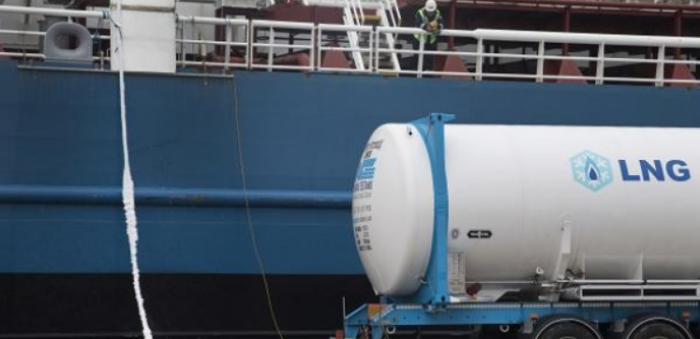The Port of Amsterdam developed a tool to make LNG bunkering safe and sustainable. This tool ensures that the responsibilities of bunker facilities operators (BFOs) regarding safe and sustainable business operations are clear and that there is a careful examination of how the LNG bunker operations are set up.
This tool has been developed in cooperation with international players in the shipping sector, the International Association of Ports and Harbors – IAPH, Titan LNG, Bureau Veritas, oil and gas companies such as Shell and ship owners such as NYK and Carnival Corporation. The aim is to become the standard tool worldwide.
[smlsubform prepend=”GET THE SAFETY4SEA IN YOUR INBOX!” showname=false emailtxt=”” emailholder=”Enter your email address” showsubmit=true submittxt=”Submit” jsthanks=false thankyou=”Thank you for subscribing to our mailing list”]
According to, Peter Alkema of Port of Amsterdam and chairman of the working group, with this tool the Port achieves two goals. Firstly the tool supports port authorities to perform the decision-making process relating to granting permits to LNG bunker facility operators in their ports in a uniform manner. Secondly the tool gives collaborating ports, which are members of the IAPH, the opportunity to share audit results and information on a BFO’s safety performance. Thus, a port does not have to go through the entire audit process again if a BFO has been audited before.
The first ship-to-ship LNG bunker facilities are now being carried out in ports, including the Port of Amsterdam where Titan LNG will locate with bunker ship Flexfueler 001 late this year.
Port of Amsterdam is also preparing for the arrival of LNG ships in this way. According to the global order book, the number of LNG-fueled ships is expected to nearly double by 2024. A research by DNV-GL shows that LNG will be the transition fuel for shipping in the years ahead en route to carbon-free fuels.
The working group believes that it will also be possible to apply the lessons learned and the employed methods to other alternative fuels, such as hydrogen and methanol.






























































